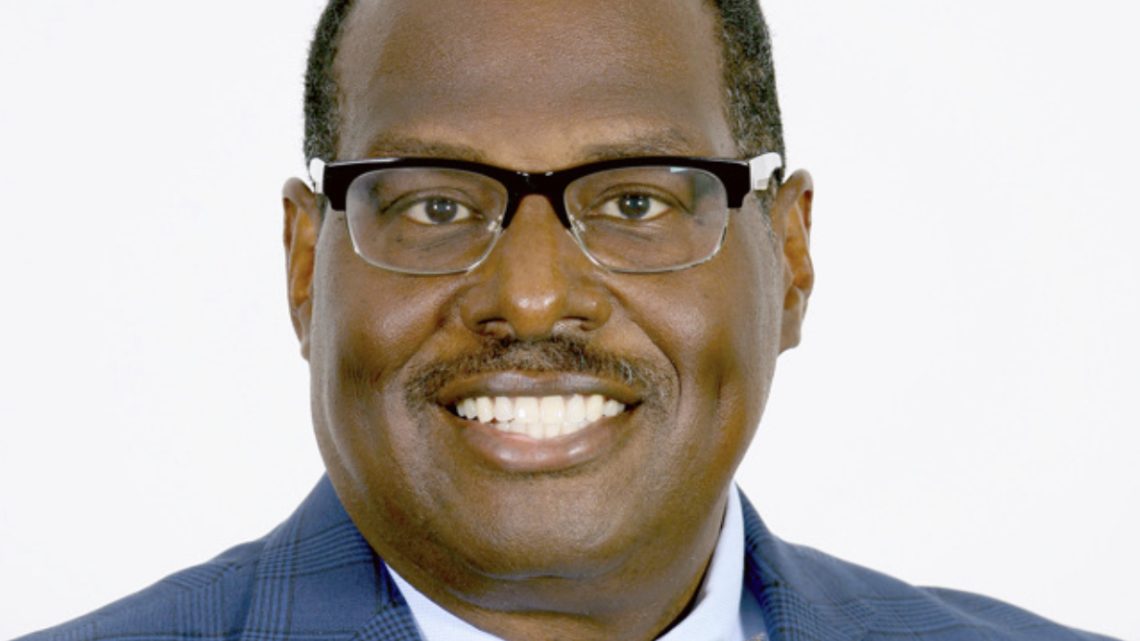Daniel Honoré recently began serving as president of the Minnesota Conference of Seventh-day Adventists. In this interview, he reflects on his career leading multiple Adventist conferences and how the church can speak to pressing social issues.
Question: You were recently named the new president of the Minnesota Conference of Seventh-day Adventists. Congratulations on your new position. When did you arrive and how are you finding it so far?
Answer: I arrived on September 16. And so far, so good. People are very pleasant here—more laid-back than New York. It’s been a good experience so far.
Was it hard to make the decision to leave the regional Northeastern Conference, where you served for nearly 10 years?
It was not a difficult decision. I left the presidency of the Northeastern Conference roughly one year ago, due to term limits. Since that time, I have been assisting and advising the new president and continuing to work on some of the projects we had started. But I always sensed that I could be doing more. I had been praying and asking God to show me where he would have me go next. This came out of the blue—out of nowhere. I did not lobby for it, I did not campaign, I did not seek it. It was offered, and I jumped gladly, believing that this was an answer to prayer.
Your territory was large in the Northeastern Conference—the Minnesota Conference has fewer members and fewer churches and a smaller footprint. What was the attraction to you in going smaller?
For me, it is not about bigger or smaller. What is important is serving and being used somewhere where there is a need. I feel honored to be here to serve.
Being smaller brings opportunities and it also presents some challenges. The opportunities are to get around and see more of the people. In Northeastern, we had 60,000 members and almost 200 congregations. Here in Minnesota, we have 11,000 members and about 90 congregations. So, I can get around the full circuit in two years, where in Northeastern it would have taken four or five years. Here there is more opportunity for connection and intimacy and getting to know people better.
Of course, a major difference is that the Northeastern Conference is a regional conference, serving Black churches. The Minnesota Conference is a state conference, and I am guessing the churches are comprised of mostly white members—is that right? As far as I know, you are the first to move from serving as a regional conference president to a state conference president. Do you know if you are the first to make this move?
As far as I know, I am the first to make that move. I am not the first Black president of a state conference, of course. We have a Black president right now in Northern California and Potomac. Arizona and Southeastern California have had Black presidents. Recently, Nevada-Utah had one. So, I am not the first Black president in that sense, but I am the first making that shift from a regional to a state conference.
Also, I need to say that the Minnesota Conference is a diverse conference with a very diverse membership. About 20% of members are of African origin. Most of these are immigrants, with the largest group coming from Kenya. Then about 20% of members are Hispanic, mostly from Mexico and Central America. We also have a few Asian congregations. I would say about 50% of the members are Caucasian.
If there is any tension in this conference, it is not ethnographic but more geographic. The bulk of the membership lives in the Minneapolis-St. Paul Twin Cities. So the tension that we sometimes sense here is that the churches in the northern part of the state, and some in the southern part of the state, feel that the conference doesn’t pay as much attention to them.
We have an obligation to serve the entire constituency, both across ethnic lines and geographic lines, and we are going to try to serve everyone the best that we can.
Would you say the diversity you are seeing in the Minnesota Conference mirrors the diversity in Adventism across the entire US?
I think so. The church is becoming more and more diverse. I have seen the articles in Spectrum and other publications about the browning of the church. Across America, we are seeing a cultural shift in the church. And to a large extent, that has already happened here.
So you are the first to make that shift, moving from a regional to a state conference—but maybe not the last!
I think that is very possible. And that speaks positively for the church because 20 to 30 years ago, this would not have happened. The fact that it can happen now—and is really not such a big deal—speaks positively. Although we still have a long way to go, we are moving in the right direction as a church.
As things continue to change, do you think the church will—and should—continue segregating its conferences, with the regional Black conferences that have their own structures separate from the state conferences? Will they amalgamate at some point?
There are always possibilities—there is always room for improvement. There has been talk of restructuring. But you have to remember that the present system, when it was established almost 80 years ago, came about because the white power structure within the church refused integration. Blacks wanted full integration and the church said no.
When the regional conferences were started, the expectation within the power structure was that they would not last. It was thought that they would fail, and the Blacks would come back asking for handouts and begging to be readmitted to the “normal” church.
But regional conferences have succeeded beyond expectation.
When we look at the make-up of the church, examining those Black churches who did not go into the Black conferences versus those who did, the churches who remained with the state conferences have grown four-fold over 80 years. And the regional conferences have grown sixteen-fold!
Regional conferences have provided a solid core of leadership within the Black church. They have provided many programs for their members and employees. The regional retirement system is far superior to the program of the North American Division, for example. With their emphasis on education and structure, the regional conferences have moved tens of thousands of Black people from poverty into the middle class. The system has produced some great things.
Yes, there can always be discussion, and there should be. How can we make the church better? We need to continue this discussion until the second coming.
But a non-starter would be to say, “We are going to dissolve the regional conferences and the membership needs to join the state conferences.”
If instead you want to talk about restructuring, and work toward restructuring everyone—not just one part of the church—then we can discuss.
The main argument I have heard against the restructuring, or amalgamation, is that the opportunities for leadership for Black pastors would decrease.
Yes, and you could also look at reverse regional conferences because—in the context of this demographic conversation we are having today and the “browning” of the church—we have also seen white flight in major Adventist centers. You went to CUC [Columbia Union College, now Washington Adventist University, in Takoma Park, Maryland] and I did too. And when I was there, Sligo Church was a 3,000-member church, overwhelmingly Caucasian. If you go to Sligo today, you can count the whites on your hand. And that has happened all up and down the east coast, from Miami to Washington to Georgia. In all the major urban centers we have seen the disappearance of the white members.
So we need to offer something that appeals to the majority population in this country. It cannot be all Black, or obviously it will not be appealing to the general population. And that is a challenge that I see here in Minnesota as well. We want to be diverse, but we also want to make sure everyone feels they have a place in the church.
I have worshipped in congregations in Europe—France and Belgium and Denmark and Germany—and we see the same phenomenon. It is mostly an immigrant church that is not relevant to the majority population.
We have to be relevant to every sector of society.
Under your leadership, where you served for nearly 10 years as president, the Northeastern Conference membership grew, new church buildings were acquired, and debts were liquidated. In a time when church membership is shrinking in many places, to what do you attribute this success? What are you most proud of accomplishing during your time in Northeastern?
Yes, we had quite a few major accomplishments: our membership grew by 10,000, from 50,000 to 60,000. We were able to purchase close to 40 church buildings. We built a senior citizen tower with 158 apartments. And more.
But I consider the biggest accomplishment to be the financial restructuring and stability that we brought to the conference.
Northeastern used to be the butt of jokes. Everybody saw us as a powerhouse with membership, but when it came to finances, we were the footnote. In the audit reports of the Atlantic Union and the North American Division, we were always owing. We owed the division millions of dollars, and we owed the retirement fund, Adventist Risk Management, millions. So in those nine years that we served, we were able to eradicate those debts—completely pay them off. When I left, the conference had close to $5 million in cash assets.
To me, that is the biggest accomplishment—to not only be an evangelizing powerhouse but also to have financial stability. That will benefit the conference for years.
Do you think the financial stability that you created in the Northeastern Conference was one of the things that made you attractive to the Minnesota Conference?
In speaking with our union president here, Gary Thurber, he said that was definitely a plus. He had been a president in the Atlantic Union and he remembers how it used to be.
So now that you are in Minnesota, what plans and goals do you have for the state conference there?
I have been having conversations with many different people. And so far, our number one priority is to grow the conference. Minnesota is a fast-growing conference already. A few years ago, we had 8,000 members. And now we are at 11,000 already, but we want to accelerate that. We calculated that one out of every 482 Minnesotans is an Adventist, and we want to work hard to shrink that ratio. Some churches have not baptized anyone in years. We want to equip our pastors and lay people with the tools they need to keep the church growing. The mission of the church is to proclaim God’s kingdom and his second coming. We think we have a unique message as Seventh-day Adventists, and we intend to share that with everyone.
Secondly, as is the case with the rest of the division, the education system is lagging behind and enrollment is low. We have a boarding academy in Minnesota, Maplewood Academy. When I spoke at their Alumni Weekend recently, I assured them I was not there to close their academy but to work with them to build up their enrollment. We also support 11 elementary schools. One challenge is that the tuition dollar is just not enough to keep a quality system going. We need to find ways of generating income for our education system that will lower tuition rates so that more parents can feel comfortable sending their children to Adventist schools.
Thirdly, we have members who have been faithful all their lives and have supported the conference, and in their sunset years, there really isn’t that much here for them. We want to see what we can do to help our aging population so that they feel that a life of service was not in vain.
So far, those are the main priorities we have identified, but we are still assessing and engaging with different segments of our members to see how we can improve the church here in Minnesota.
You have been in ministry for a long time, and your father before you. But you studied law and before working full-time as a pastor, you ran a law practice in Boston, specializing in immigration law. Did you plan to have a career as a lawyer?
I have always had two interests in life: pastoring and law. (I grew up watching Perry Mason, and thinking, “Wow, I want to do that someday.”) So I graduated from Columbia Union College [now Washington Adventist University] and then did a history degree at Southern Adventist University. And when the opportunities for ministry weren’t there, I thought, “Why not go to law school?” So I did and waited 10 years, and still, there was no call to ministry. So I launched my law practice. And as fate would have it, the very next day after I signed the lease for the office, the church came calling. I said I couldn’t do it but that I would work in ministry part-time. I was bi-vocational for about eight years. During the day I was practicing law, and I spent nights and weekends visiting members, holding prayer meetings, helping in church. Then I had a traumatic event: the conference called and said, “We are having economic hard times, and we are going to have to let you go.” They laid off 40-some ministers, including me, in one day.
But after that, when I was cut off from ministry, I decided that if I ever had the chance to go back to ministry, I would give up the law practice. And the opportunity came a year later when the conference asked me to serve as stewardship and trust services director. So I shut down my practice and moved to New York to work full-time for the church. Eight years later I was called to serve as president of the conference. And that has been my trajectory. It has been an interesting ride, but I have no regrets. God has been good to me.
What has your legal work taught you about ministry? How does your legal background affect your approach to your sermons and to pastoring?
I tend to be more analytical than the average guy. In both the legal profession and ministry, it isn’t a general approach—you see that individuals have specific needs and you tailor your service.
When I am preparing sermons, I tend to be analytical. I know that you can see a story from different points of view. In the story of Jonah, there is Jonah’s perspective, but also that of the sailors, or God’s. You have to anticipate where the other person is coming from.
And I believe you have helped church members with their legal needs?
When I was a pastor at a local church and running a law practice, I did pro bono work for several of my members. And in the conference, we put on programs like an immigration fair once a year with community service leaders that provided information to help people legalize their status. Anytime we can do anything that will benefit the community, without exposing the church to liability, we will do it.
I notice you have always had a strong focus on social justice. What sparked your interest in this direction?
From my college years, I was always fascinated with the Old Testament prophets—Isaiah, Amos, and so on—and their calls to justice. “Let justice flow like a river” [Amos 5:24] and “Every valley shall be exalted, and every hill brought low” [Isaiah 40:4].
I read a lot, and I followed the teachings of Martin Luther King Jr., and this inspired me that the church should work as a force in society to bring about good.
The church has a moral obligation to speak out sometimes.
Saying that, however, I shy away from partisan politics. I don’t believe that any political party has a monopoly on vice or virtue. I think that when we come to church on Sabbath and enter the sanctuary, the sanctuary should be just that: a place where we come and put aside our political views and concentrate on being brothers and sisters in fellowship together. It doesn’t matter whether you watch CNN or Fox News or MSNBC—when we come together, we should congregate as brothers and sisters without our discourse descending into the pettiness that we see in society.
But there are times when things are so egregious that, as the conscience of society, we must speak out. Since arriving in Minnesota, I have been down to the memorial on the site where George Floyd was killed, and it is still repulsive to see those images—seeing someone have the life strangled out of them for nine minutes by the state. Those are the types of situations that I am referring to where we have to say what is right and what is wrong.
I am also inspired by our Adventist pioneers—William Miller, Ellen White, and so on were very strong abolitionists. If you look at the letters they wrote at the time, they would be considered extremists by some Adventists today. You couldn’t say some of what they said in some churches today. But I think we have an obligation to speak up for justice when we have those opportunities.
It all seems so obvious that is what our church should be standing for, but have you gotten some pushback from members in the past, asking you not to talk about social justice, saying it is antithetical to their beliefs?
Yes. In New York, I can think of two instances. After Eric Garner from Staten Island died in a police chokehold, I wrote a letter because the young people in our church were upset. If we did not address this, they would go outside the church to find a satisfactory channel to express their views. After I wrote the letter, many of them contacted me, and there was overwhelming support for the stance we took. Over 50,000 people read the letter on our social media page.
But in addition, I received calls to resign—people said I embarrassed the church and made a fool of myself. However, those comments were few and far between. The vast majority of membership—especially young adults—felt satisfied that their church was aligned with their views on social justice.
Please tell us a little bit about your family, if you would.
I grew up in what I thought was a very normal family—only after I was an adult did I realize that we weren’t so normal. I was born in Santo Domingo, Dominican Republic, to a Dominican mother and a Haitian father. I grew up in a home that was basically trilingual: French, Spanish, English. We moved around. I was a PK [pastor’s kid], and we moved between Boston, New York, Martinique, and there was a little time in Canada. At Southern Adventist University, I met my wife, Fritze. She was born in Haiti and came to the US as a teenager. She is a nurse informaticist for a health system on Long Island. Since the pandemic, she has been working remotely and that has given us flexibility. We have been married nearly 33 years and have four adult children. Our children all went to Oakwood. Our son Gamaliel, the oldest, is in healthcare administration. Our second son Gabriel works in communication and marketing. Our third son Nathanael just finished law school and took the bar exam. Our youngest, our daughter Danielle, is in graduate school, pursuing a master’s in public health at New York Medical College.
They have opted to remain behind in New York following their own career paths. They are at that stage where they have to spread their own wings. We are proud of them all.
This interview was originally published online by Spectrum: the journal of the Adventist Forum.









